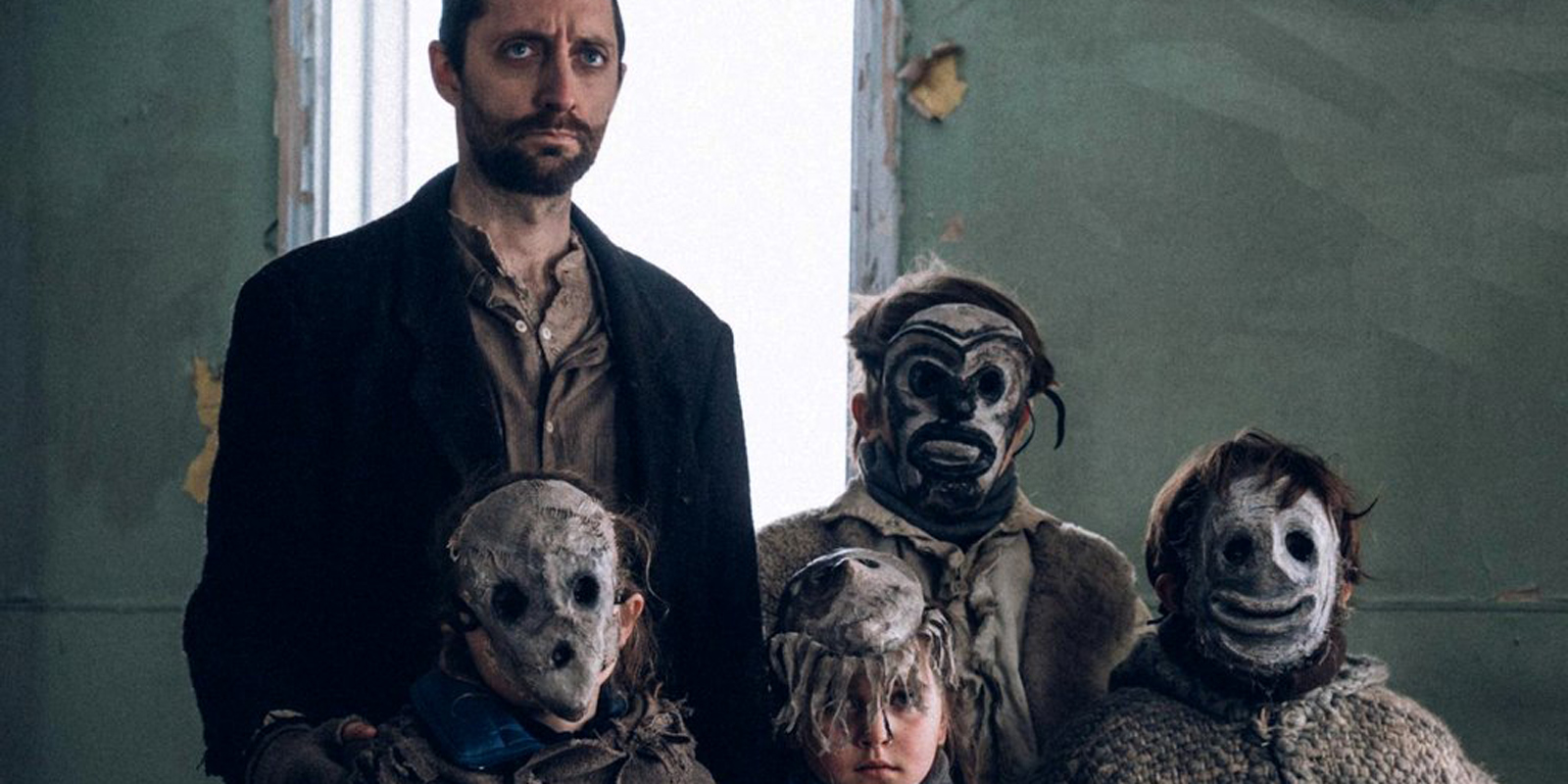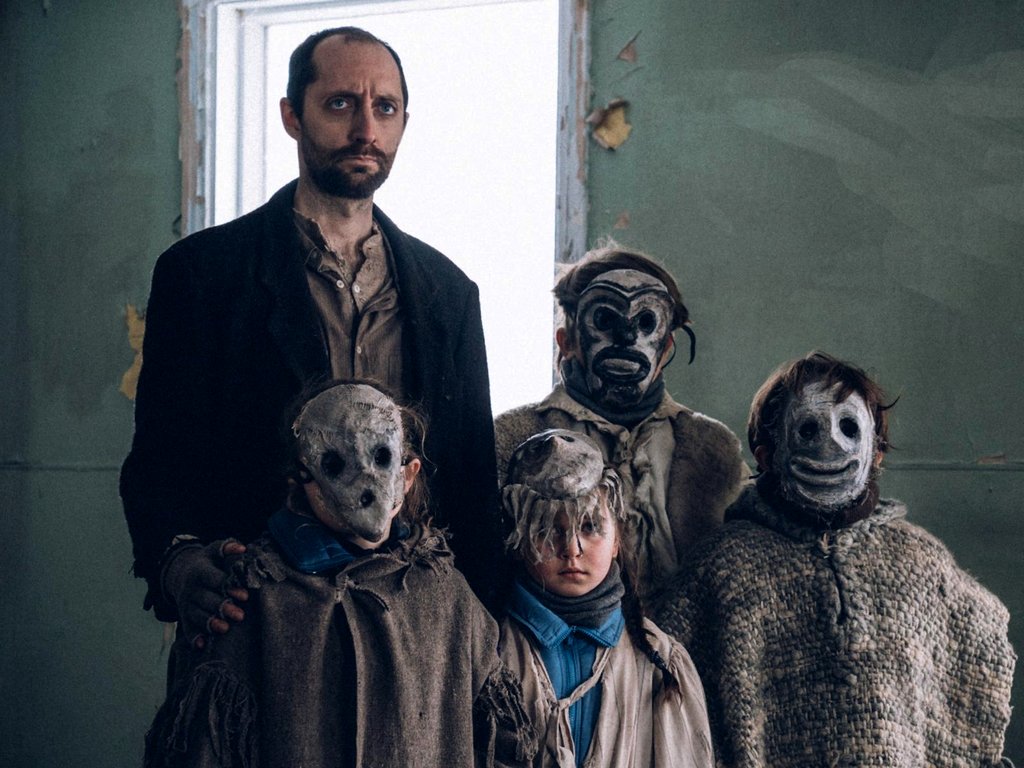by Hogan Short

Denis Côté took some time to speak with us about his eleventh feature film, Ghost Town Anthology. When a twenty one year old in a small Canadian community dies in a car accident, the rural town is left confused and grief stricken. Was this car accident really an accident? As the 215 members of the community deal with the tragic news, time seems to pause and an eery sense of dread washes over the town. Ghost Town Anthology lets you ask the questions and decide for yourself the meaning of it all in this horror-esque that refuses to hand hold its audience. Côté talks about how these ideas were formed, the meaning of the film to him, and some of the creative decisions he made during the film.
Ghost Town Anthology was loosely based on a book. Can you talk about how you found the book? How it affected you?
Yes, I would say very loosely based. This is my eleventh film so I don’t have the same impulse to change the world. You are trying to grab something from the air to say something about society. This is a film about ordinary xenophobia. There were Asians and Nigerians crossing the border from the USA, entering Quebec. There was 4000 over four or five months. That is a low number of people, and people were worried. That was my point of departure. People would ask me “when are you doing your horror” and I was not so sure. I read the book. There’s really no film in the book at all. It’s poetry, fragments, with no real story. I never adapted a book before so maybe I could try something? I talked to the author. I asked, “Can I use five percent of this? Keep names and one or two parts?” and she said sure. For her she’s excited, she says she can see the whole spirit of the book is in the film.

Were there other films you drew influence from when making this?
Of course when you’re 45 years old and it’s your eleventh film, you use your experience for reference or inspiration. At some point you just listen to yourself. I had a film with ten main characters. That was really scary. So I watched a lot of Robert Altman films. In Nashville, the group is the character. For Ghost Town Anthology, the main character was the winter, the villagers, and the group. The audience might not connect with any characters. When I was young I was a horror encyclopedia. Argento, those Italian masters, it stuck in my DNA. This is not a horror. Some people have been saying it’s a spectral horror.
Speaking of this being an ensemble film, what was the casting process like?
Casting for me now is a big, fun thing. I used to not really be involved in the casting process. I used to not be interested in the actors. I was too busy, I didn’t care who was in my film. Then I started thinking of the audience. Casting can be surprising, for this film, especially for a Quebec audience. There are three people who are extremely famous for being comedy people in Quebec. The actor who plays the father is an extremely famous stand-up comedian here. We only saw them doing comedy. For people here that was a surprise. And for others we cast unknown people, unknown actors. It’s improbable casting – you never know what kind of casting you’ll get in a Côté film.
Why did you decide to shoot this on 16mm?
You can see the story is about things disappearing. I told my Director of Photography, the word was “residual”. Just give me the impression things are about to end, or fall off. We made jokes that we were about to shoot in hipster VHS. Then it was super 8, then we had funding so we went for 16mm. We never cleaned the film stock. We kept the dust and imperfections. It was forbidden. We kept everything, and it looks dirty. The same with makeup and costume. We had no makeup and random costumes. It had to look like total no mans land. The colour correction was unflashy. I hope you don’t feel the film is ugly, more that it’s poetically raw.
And speaking of filmmaking decisions, there seemed to be very little score used, but always this presence of a kind of…mournful wind and random noises. How did you approach sound and what were the creative reasons for the decisions?
We found all that during the editing. There’s not much music in my films. We should only use music when we are in trouble, it has to be a character. For this film, my editor found in a sound bank a slaughter house with a big metal door banging in the wind. The sound bank just explained it. It was just “slaughter house, Wisconsin, metal door flapping in the wind.” So we pitch shifted, slowed it, and you always hear the same effect we found. It’s always the same door banging in the wind. People think there’s a score now. It is so gloomy, so it fits. But there’s no score.
To me, this film seemed to be about death, literally in the film but also maybe the death of small towns and community…what does death mean to you regarding this film?
You define what you want to see. It isn’t symbolic. It is our fear of difference and our resistance to change. You can see that in our small towns and I have this poetic idea that if we don’t take care of our memory it’s always ready to take over. It doesn’t have to become a full horror film. It can just be there static, not to make people jump. It can give people an idea of death. What I told you about immigration, that was the point of departure. We are afraid of things different from us. You can pick the angle you want, death, resistance to change, immigration…I think it’s a buffet of a film. If there’s a message it isn’t as dark as it’s supposed to look like. It’s about the living not the dead and we should take care of each other. Death is lurking around the corner. It’s floating, a slow burn, you take what you want. In French the title was translated from the book and it meant “index of forgotten city” and that’s a bad title in English. A filmmaker suggested Ghost Town Anthology. Does it mean anything? It means a lot and nothing. I liked the anthology word about all these stories. I don’t mind all these subjects are floating.
It is getting great reviews and I imagine being nominated for the Golden Bear at the Berlin International Film Festival was incredible news. How does the recognition feel now?
I have a weird career. I made eleven films in thirteen years. Some are big budget and some are small. Every year they go to festivals. I’m a film festival guy. I was annoyed by that. Could I get a bigger audience? A bigger budget? That was before, like ten years ago. Now I know what cinema should be. I don’t want to be artsy fartsy but this is demanding cinema for the cinephile crowd. I need to own being the festival guy. It is great on the red carpet at Berlin and almost winning, but then you come back to a small Slovenian festival where there’s two showings and thirty people watching your movie. Success changes every week, month, year. I’m fine. Some days I want to be famous, some days I’m happy being festival guy. As for Berlin I was a little afraid because it was my fifth time there and you never know if you’re invited because you’re an old friend. I was afraid the film was unbalanced because of the group. It was maybe a small, messy film. Then we got amazing reviews, it looks fresh. We instantly sold the film to Six Territories. People were texting me all over the world wanting it. Then we had a miserable box office. It’s business as usual. I’m not desperate about anything. Cinephilia is a constant battle we are trying to win. I know the film is demanding. I feel at peace with my long years as a filmmaker.
As a fan of the movie I just have to ask, how did you film the car crash scene at the beginning of the film?
There’s no driver, the car is on a rail. The big rail I would say was eighty metres long fixed on the road. We attached a traction to a big truck on the other side of the car. We did two crashes, in the first the car was following the rail at 64kmp, the second 81kmp. We kept the 81. The car is crashing for real, following the rail. Then you erase the rail. If you look carefully you can see the back wheel floating in the air like two inches. The crash ended up on the rail so when we erased the rail it ended up floating. You look carefully you can see it. There was two choices. Do it with a real driver. That’s half a day, fix the car for safety, expensive insurance, or do what we did. It was still $20,000 and it took seven hours to install, eight people. There was not a fire but after you can see fumes, that’s all fake installed. There’s supposed to be smoke. You have to find the cars. When you do a scene you think about those American films. Can you imagine the car crashes in Hollywood films? Ours took eight people, eight hours, and cost $20,000, and imagine the crashes they have. The other big effect when she was floating. People think we did that by pasting her in. She was hanging on a real crane. She’s thirty feet up, we just erased a crane in post-production.
Ghost Town Anthology can be seen at Vancity Theatre, playing March 29th to April 4th:
March 29, 3:00 PM – March 31, 5:30 PM – April 1 – 6:30 PM – April 2, 8:30 PM – April 4, 3:00 PM
